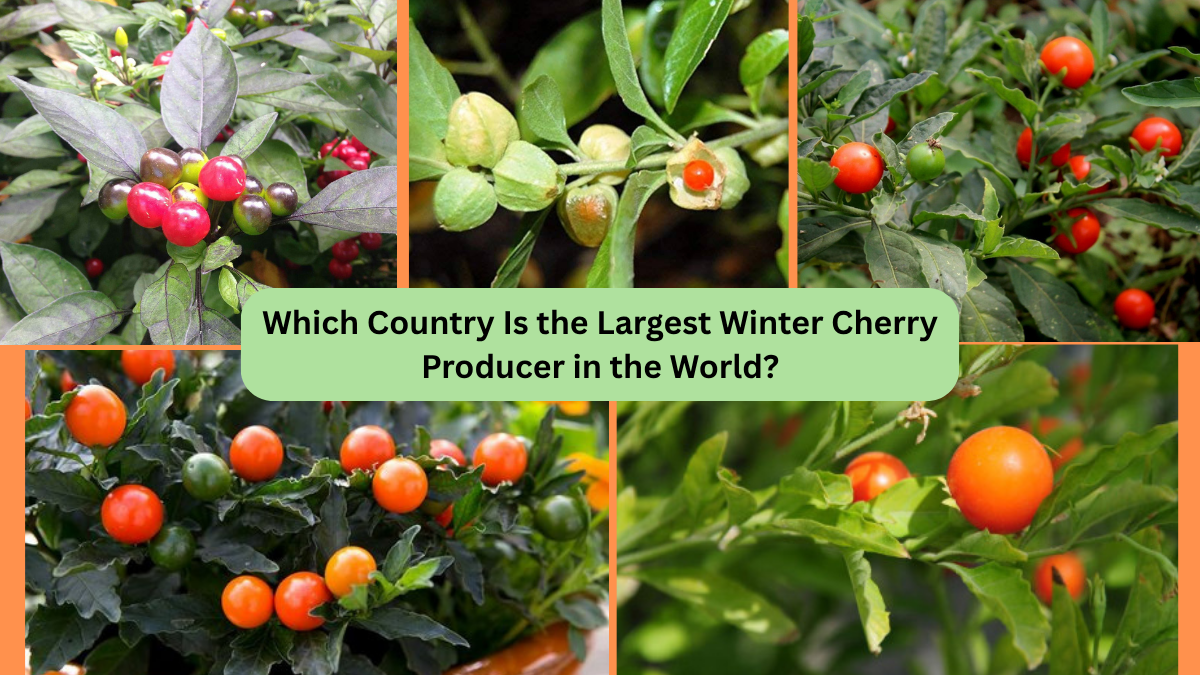The world of medicinal and ornamental plants is filled with hidden gems, and one of the most intriguing among them is the Winter Cherry. Known for its bright, lantern-like husks and rich medicinal history, the Winter Cherry holds a special place in traditional medicine and garden landscapes alike. But have you ever wondered which country leads the world in cultivating this fascinating plant? In this article, we’ll explore the origins, cultivation, uses, and global production of Winter Cherry and reveal the nation that claims the title of the largest Winter Cherry producer in the world.
What is a Winter Cherry?
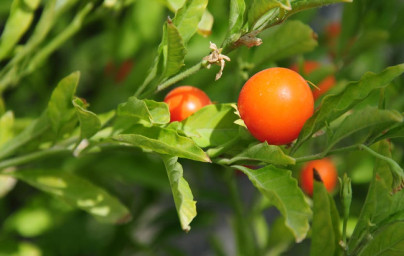
The term Winter Cherry commonly refers to Physalis alkekengi, a perennial plant in the nightshade family (Solanaceae). It’s also called the Chinese Lantern Plant because of its distinctive, bright orange to red papery husk that encases the fruit. However, in certain regions, particularly in India, Winter Cherry is another name for Withania somnifera, popularly known as Ashwagandha.
For this article, we’ll focus primarily on Ashwagandha (Withania somnifera) as it is the most widely cultivated, economically significant, and medicinally valuable plant referred to as Winter Cherry in modern agricultural and pharmaceutical contexts.
Origin and Botanical Characteristics
Ashwagandha (Winter Cherry) is native to India, the Middle East, and parts of North Africa, but its medicinal value has made it popular worldwide. It thrives in arid and semi-arid regions and can withstand high temperatures and dry conditions.
Key features of the plant include:
- Shrub-like structure reaching up to 1.5 meters
- Small, dull green flowers
- Round, orange-red berries enclosed in a papery calyx (husk)
- Thick, tuberous roots used for medicinal purposes
The plant is known for its adaptogenic properties — it helps the body resist physical and mental stress — making it highly valuable in traditional and modern herbal medicine.
Cultivation of Winter Cherry
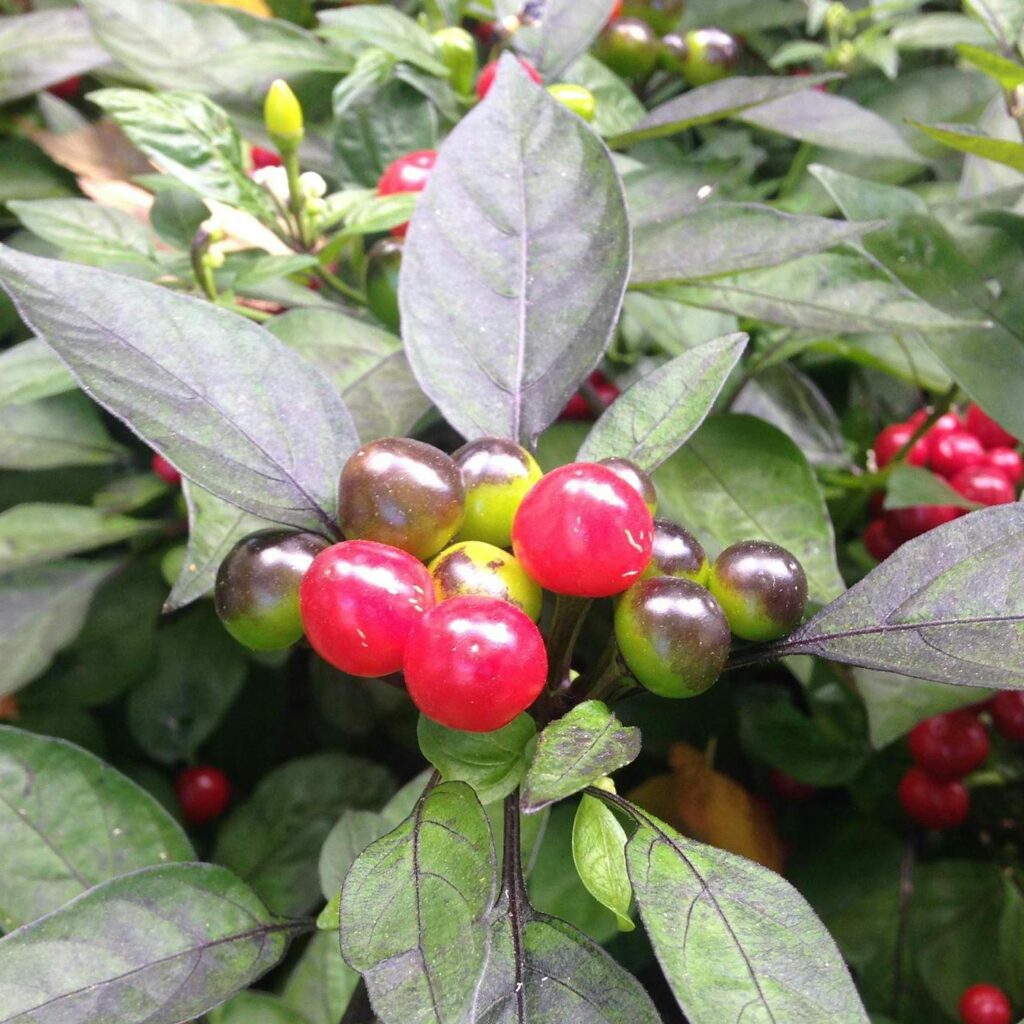
Winter Cherry (Ashwagandha) grows best in:
- Sandy or well-drained soil
- Hot, semi-arid climates
- Regions with low to moderate rainfall
- Temperatures ranging between 20°C to 35°C
It is primarily cultivated as a Kharif crop (monsoon season crop) in India, with sowing done from June to July and harvesting between December and February.
Key cultivation practices include:
- Direct seeding in well-prepared fields
- Minimal irrigation once established
- Use of organic fertilizers
- Harvesting of roots and berries after 150–180 days of planting
Global Production Overview
The demand for Winter Cherry, particularly Ashwagandha, has surged globally in recent years due to increased interest in Ayurvedic medicine, natural supplements, and stress-relief remedies. While several countries grow Winter Cherry on small scales, its commercial cultivation remains concentrated in a few regions.
The top Winter Cherry producing countries include:
- India
- Nepal
- Sri Lanka
- Pakistan
- Bangladesh
Among these, one country stands out prominently.
Which Country Is the Largest Winter Cherry Producer in the World?

Without a doubt, India is the largest Winter Cherry (Ashwagandha) producer in the world. It accounts for approximately 80-85% of the global production, making it the unrivaled leader in both cultivation area and export volume.
Why India Leads Winter Cherry Production
Several factors contribute to India’s dominance in Winter Cherry production:
1. Native Origin and Traditional Usage
Ashwagandha has been a cornerstone of Ayurveda, India’s ancient system of medicine, for over 3,000 years. Its deep-rooted cultural and medicinal significance has ensured its consistent cultivation across the country, especially in states like Madhya Pradesh, Rajasthan, Maharashtra, Uttar Pradesh, Haryana, and Gujarat.
2. Favorable Climate and Soil
India’s semi-arid and tropical regions provide ideal growing conditions for Ashwagandha. The plant thrives in poor to moderate soil fertility and requires minimal irrigation, making it suitable for the country’s large areas of marginal land.
3. Growing Global Demand for Herbal Products
The international market for herbal supplements, adaptogens, and natural stress-relief products has skyrocketed, particularly after the COVID-19 pandemic. As one of the few countries with large-scale, organized cultivation and processing of Ashwagandha, India has been able to capture this growing demand effectively.
4. Government and Industry Support
India’s Ministry of AYUSH (Ayurveda, Yoga & Naturopathy, Unani, Siddha, and Homoeopathy) actively promotes the cultivation and global trade of medicinal plants, including Ashwagandha. Additionally, private companies and farmer cooperatives have expanded processing and export capacities.
Other Major Winter Cherry Producing Countries
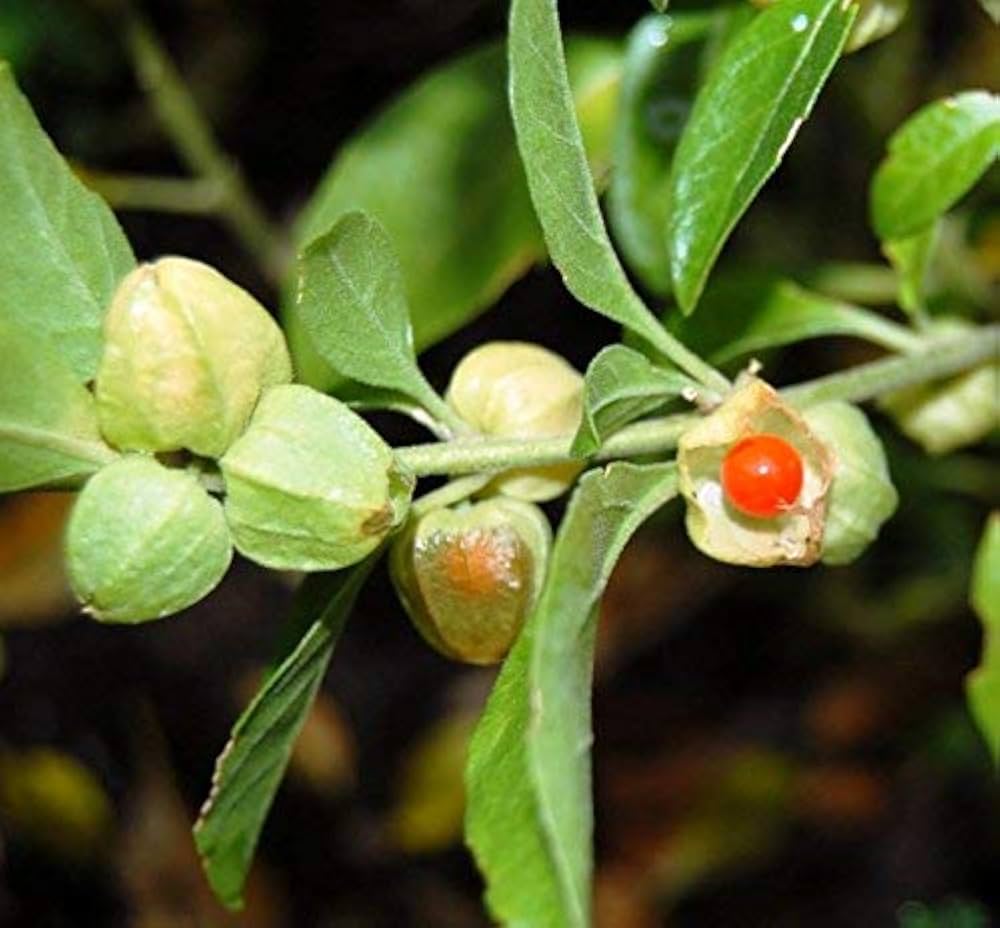
While India dominates the market, a few other countries cultivate Winter Cherry, primarily for local medicinal use.
Nepal
Nepal grows Ashwagandha in its southern plains (Terai region), though on a much smaller scale compared to India. It’s mainly used in traditional Ayurvedic formulations.
Pakistan
In Pakistan, Winter Cherry is cultivated in the Punjab and Sindh provinces. It’s widely used in local herbal medicine systems like Unani Tibb.
Sri Lanka
The plant grows well in Sri Lanka’s dry zone areas, used mostly for domestic consumption in traditional medicine.
Bangladesh
Small-scale Ashwagandha farming exists in Bangladesh, though it relies heavily on imports for Ayurvedic preparations.
Uses and Health Benefits of Winter Cherry (Ashwagandha)
Winter Cherry, particularly Ashwagandha, is famed for its numerous medicinal properties:
1. Stress and Anxiety Reduction
Ashwagandha is an adaptogen, meaning it helps the body cope with stress. Several clinical trials have confirmed its anti-stress and anti-anxiety effects.
2. Boosts Immunity
It’s widely used as an immune-boosting herb, especially during seasonal changes and for post-illness recovery.
3. Enhances Stamina and Strength
Athletes and fitness enthusiasts use Ashwagandha to improve endurance, muscle strength, and overall vitality.
4. Supports Mental Health
Its natural calming effects aid in improving sleep quality, memory, and cognitive function.
5. Anti-Inflammatory and Antioxidant Effects
The herb contains compounds that help reduce inflammation, oxidative stress, and support joint health.
6. Traditional Uses
In Ayurveda, Ashwagandha is used to manage conditions like arthritis, fatigue, sexual dysfunction, and hormonal imbalances.
Future Prospects of Winter Cherry Production
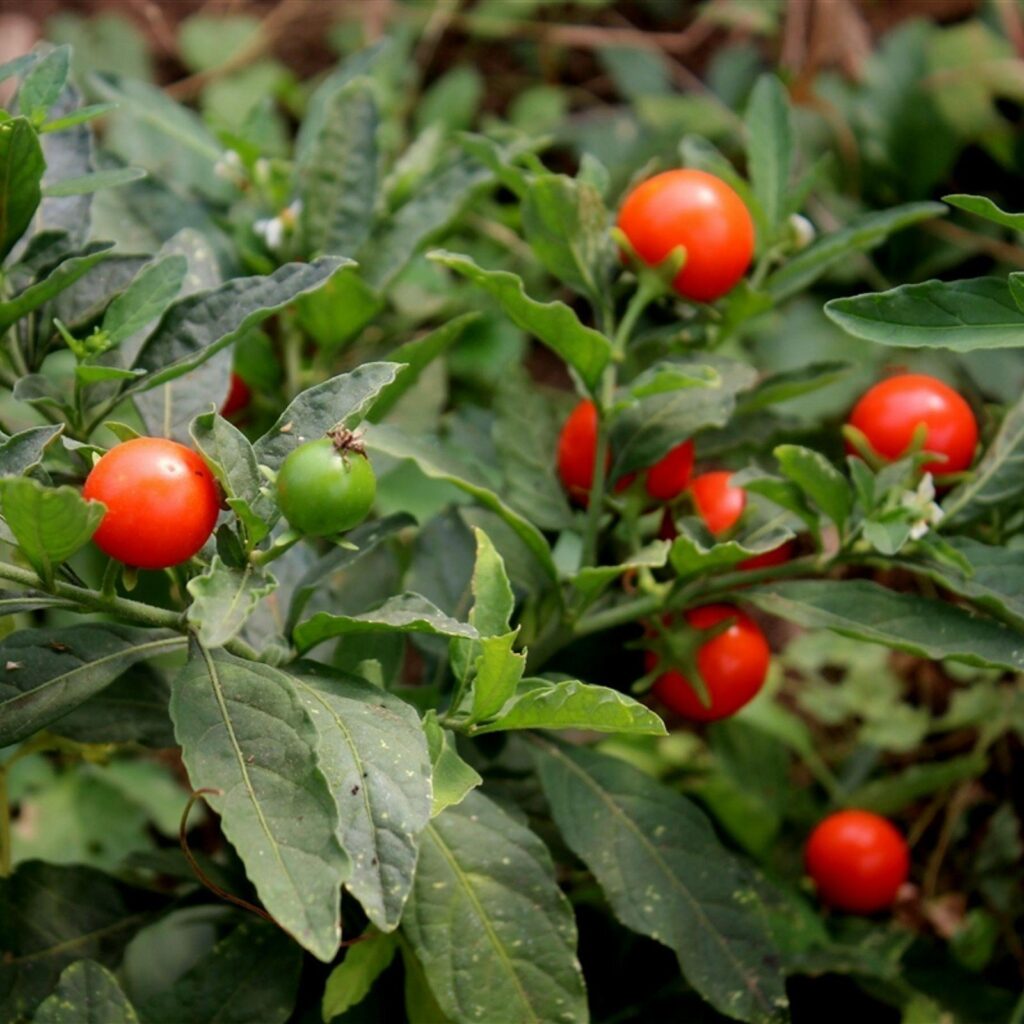
The future of Winter Cherry (Ashwagandha) cultivation is bright, particularly for India. With increasing global awareness of natural health solutions, demand for Ashwagandha-based supplements, teas, capsules, and cosmetic products is projected to grow at a compound annual growth rate (CAGR) of over 10% in the next five years.
The Indian government is also offering incentives for medicinal plant cultivation under schemes like the National AYUSH Mission (NAM), ensuring farmers receive financial and technical support.
Conclusion
The Winter Cherry (Ashwagandha) has journeyed from ancient Ayurvedic manuscripts to modern pharmacy shelves around the world. While several countries cultivate this remarkable plant, India remains the world’s largest Winter Cherry producer, accounting for the vast majority of global supply.
Thanks to its favorable climate, centuries-old traditional knowledge, and booming herbal market, India has solidified its position as the leading hub for Winter Cherry cultivation and export. As interest in holistic wellness and plant-based medicine continues to surge globally, India’s leadership in Ashwagandha production promises to remain unchallenged for years to come.
